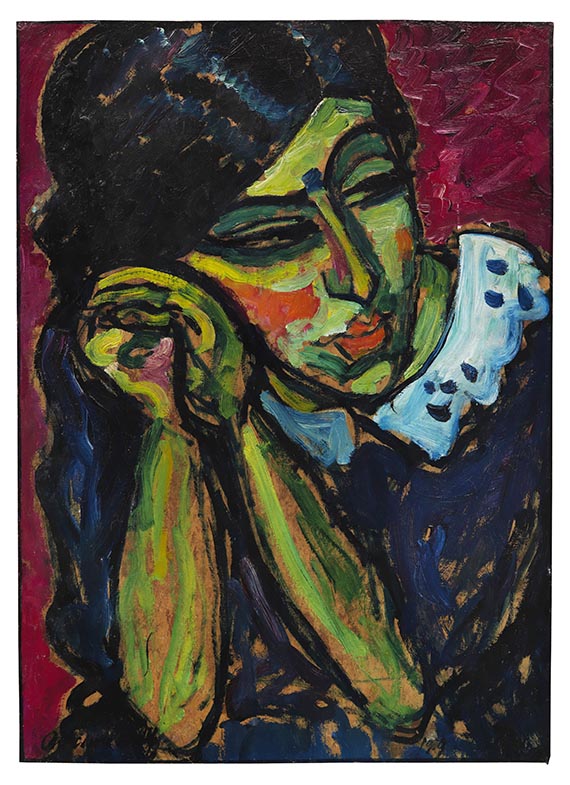Dictionary


Hard Edge
The origins of Hard Edge painting date back to the 1940s, when artists such as Barnett Newman, Ad Reinhardt, Mark Rothko und Clyfford Still pioneered Colour Field painting, rejecting gestural, expressive Action painting in favour of monochrome colour fields. Hard Edge developed as a variation of Colour Field painting.
The name Hard Edge, alluded to the selectively executed contour lines between the colour surfaces in the picture. These colour fields frequently contained simple shapes. Like Colour Field painting, in Hard Edge painting, the emphasis was on the flatness of the colours used and a lack of visible brush strokes, which thus negated the personal signature of the artist. Hard Edge artists favoured a cooler palate. An additional characteristic of Hard Edge painting and graphic works was a limited number of colour fields. The term also has another realm of meaning, which creates more room for interpretation – hard-edged can also mean uncompromising – thus reflecting the artists’ radical precision. The term was coined by art critic Jules Langsner in 1958. Hard Edge painting reached its peak in the late 1950s and 1960s. The main representatives of Hard Edge art included the American painters Al Held (1928-2005), Ellsworth Kelly (born 1923), Kenneth Noland (born 1924) and Frank Stella (born 1936). Some of the artists participated in the Post Painterly Abstraction exhibition, curated by Clement Greenberg, and thus Hard Edge is regarded as belonging to the genre of the same name.
The origins of Hard Edge painting date back to the 1940s, when artists such as Barnett Newman, Ad Reinhardt, Mark Rothko und Clyfford Still pioneered Colour Field painting, rejecting gestural, expressive Action painting in favour of monochrome colour fields. Hard Edge developed as a variation of Colour Field painting.
The name Hard Edge, alluded to the selectively executed contour lines between the colour surfaces in the picture. These colour fields frequently contained simple shapes. Like Colour Field painting, in Hard Edge painting, the emphasis was on the flatness of the colours used and a lack of visible brush strokes, which thus negated the personal signature of the artist. Hard Edge artists favoured a cooler palate. An additional characteristic of Hard Edge painting and graphic works was a limited number of colour fields. The term also has another realm of meaning, which creates more room for interpretation – hard-edged can also mean uncompromising – thus reflecting the artists’ radical precision. The term was coined by art critic Jules Langsner in 1958. Hard Edge painting reached its peak in the late 1950s and 1960s. The main representatives of Hard Edge art included the American painters Al Held (1928-2005), Ellsworth Kelly (born 1923), Kenneth Noland (born 1924) and Frank Stella (born 1936). Some of the artists participated in the Post Painterly Abstraction exhibition, curated by Clement Greenberg, and thus Hard Edge is regarded as belonging to the genre of the same name.
Offers




